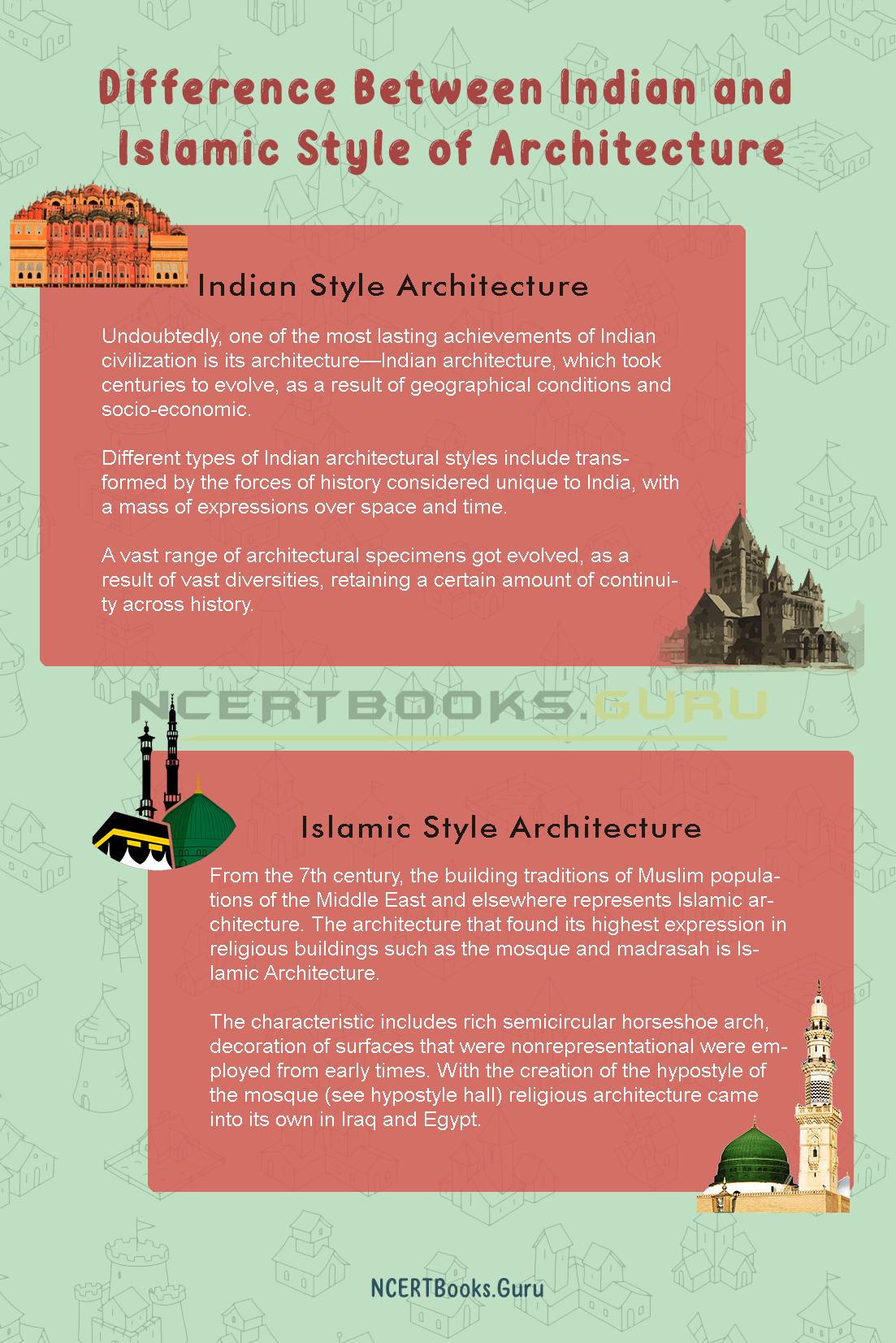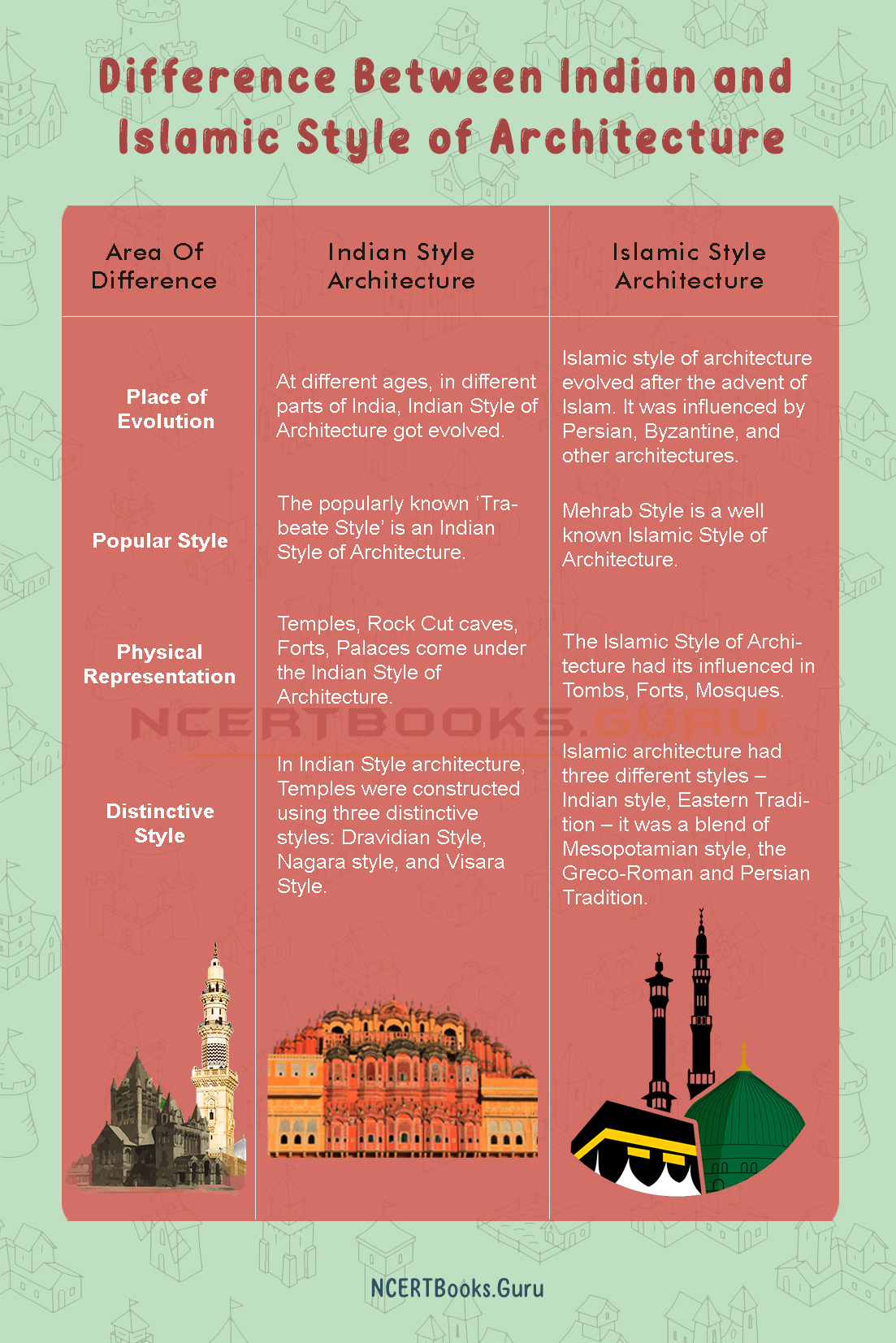Introduction
The difference between Islamic and Indian Style Architecture is important from the perspective of Indian Art, Architecture and Culture Syllabus. Architectural entities that showcased multiple unique styles are known as Indo-Islamic architecture or Indo-Saracenic.
You can also find differences between articles on various topics that you need to know. Just tap on the quick link available and get to know the basic differences between them.
What is the Difference Between Indian and Islamic Style of Architecture?
About Indian Style Architecture
Undoubtedly, one of the most lasting achievements of Indian civilization is its architecture—Indian architecture, which took centuries to evolve, as a result of geographical conditions and socio-economic.
Different types of Indian architectural styles include transformed by the forces of history considered unique to India, with a mass of expressions over space and time.
A vast range of architectural specimens got evolved, as a result of vast diversities, retaining a certain amount of continuity across history.
About Islamic Style Architecture
From the 7th century, the building traditions of Muslim populations of the Middle East and elsewhere represents Islamic architecture. The architecture that found its highest expression in religious buildings such as the mosque and madrasah is Islamic Architecture.
The characteristic includes rich semicircular horseshoe arch, decoration of surfaces that were nonrepresentational were employed from early times. With the creation of the hypostyle of the mosque (see hypostyle hall) religious architecture came into its own in Iraq and Egypt.
Alhambra is one of the greatest examples of secular Islamic architecture. For a full treatment of the subject, see Islamic arts.

The difference between Islamic and Indian Style Architecture
| Area Of Difference | Indian Style Architecture | Islamic Style Architecture |
| Place of Evolution | At different ages, in different parts of India, Indian Style of Architecture got evolved. | Islamic style of architecture evolved after the advent of Islam. It was influenced by Persian, Byzantine, and other architectures. |
| Popular Style | The popularly known ‘Trabeate Style’ is an Indian Style of Architecture. | Mehrab Style is a well known Islamic Style of Architecture. |
| Physical Representation | Temples, Rock Cut caves, Forts, Palaces come under the Indian Style of Architecture. | The Islamic Style of Architecture had its influenced in Tombs, Forts, Mosques. |
| Distinctive Style | In Indian Style architecture, Temples were constructed using three distinctive styles: Dravidian Style, Nagara style, and Visara Style. | Islamic architecture had three different styles – Indian style, Eastern Tradition – it was a blend of Mesopotamian style, the Greco-Roman and Persian Tradition. |

Similarities between Islamic and Indian Style Architecture
Indian vs Islamic Style Architecture, to learn more about the similarities it is better to thoroughly know Nagara, Dravidian Style Architecture, and Indo-Islamic Architecture. Visit the below-given links to learn about Nagara style architecture, Dravidian Style architecture, Indo-Islamic Architecture, Gandhara and Mathura School of Art, Buddhist and Jain Architecture.
FAQs on Difference Between Indian and Islamic Style Of Architecture
Question:
What is the major key difference between the Nagara and Dravidian styles of temple design?
Answer:
The difference between Nagara and Dravidian Style of Temple Architecture is that Nagara Style multiple Shikhara and towers while Dravidian Style has single Shikhara and tower.
Question:
What is meant by the Indo Islamic style of architecture?
Answer:
Indo-Islamic architecture is the architecture of the Indian subcontinent produced by and for Islamic patrons and purposes.
Question:
How did Islam influence architecture in India?
Answer:
After the 13th century, to the established Indian style, Muslim conquerors introduced Islamic architecture. The Muslims adopted fundamental elements of Indian architecture such as balconies supported by brackets, courtyards surrounded by colonnades and the lavish decoration of all architecture.
